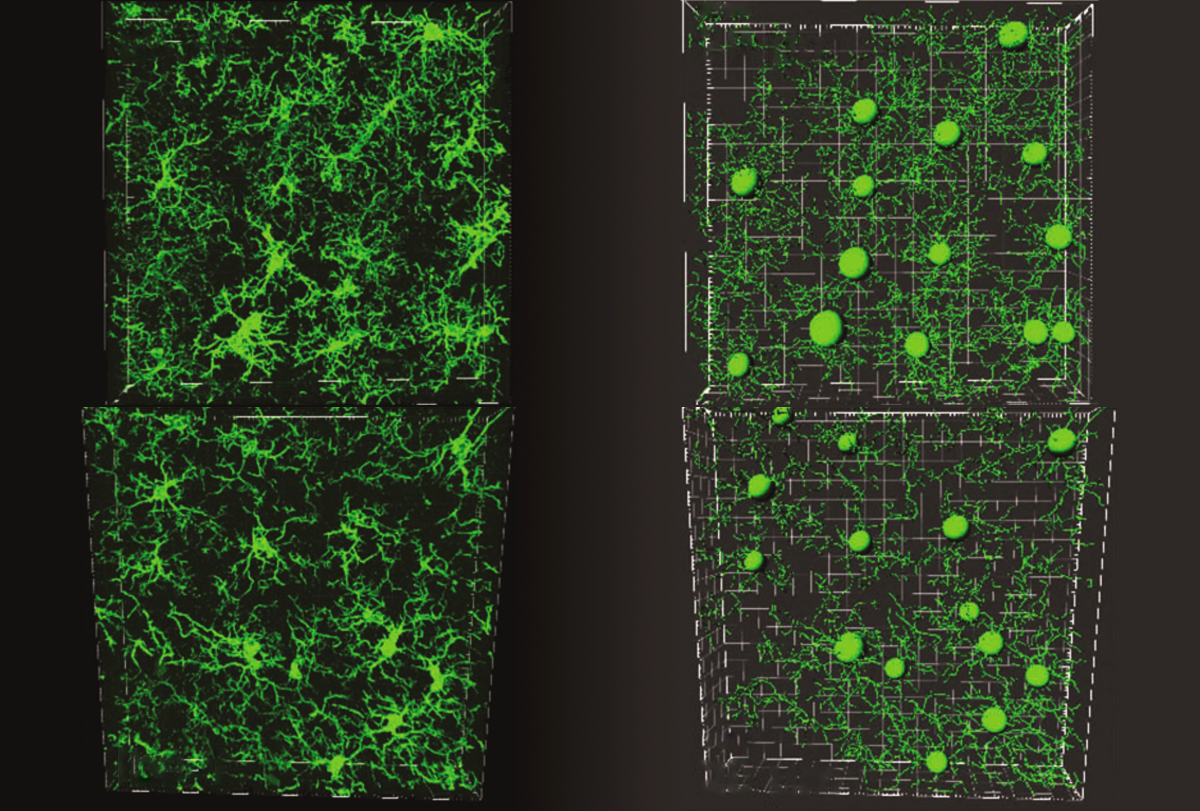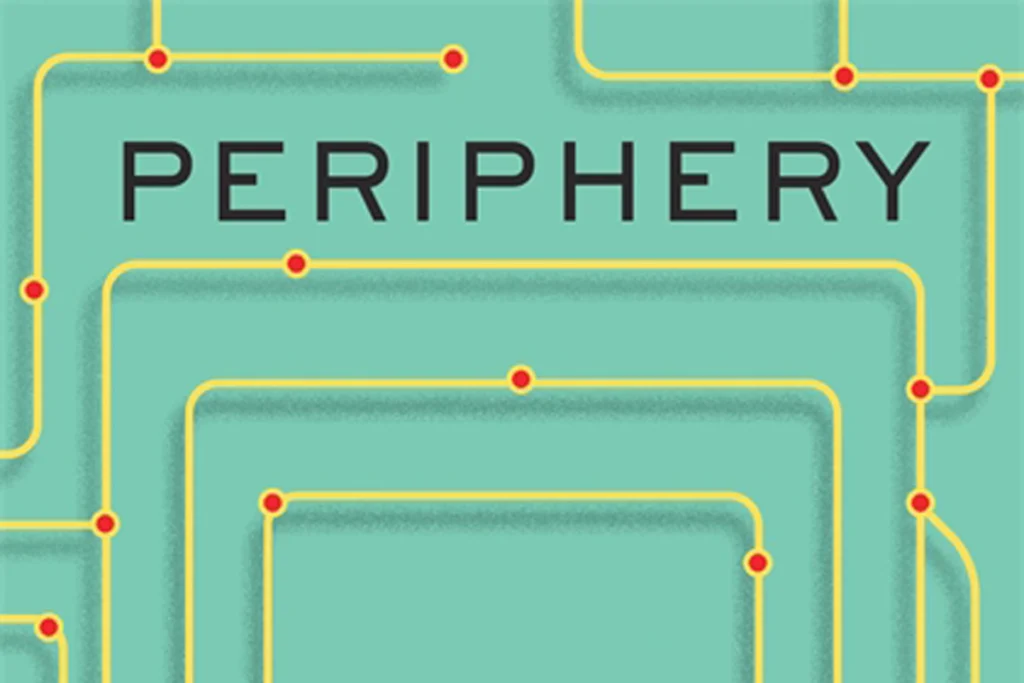
Serotonin powers pruning of developing brain circuits in mice
Mice with microglia missing receptors for the neurotransmitter serotonin since birth have too many synapses and show social difficulties in adulthood.
Mice with microglia missing receptors for the neurotransmitter serotonin since birth have social difficulties and other autism-like behaviors, a new study has found. Eliminating the receptors in adult mice has no such effects.
The findings support a role for microglia in streamlining brain circuits during development and point to serotonin as a key regulator of this process.
“We’ve known for a long time that serotonin is important for neurodevelopment, and we also know that microglia are important for supporting the pruning and maturation of brain circuits,” says lead investigator Anne Roumier, professor at Sorbonne University in Paris, France. “By interrupting the interaction between serotonin and microglia, we induce defects in neuronal circuitry that result in behavioral deficits reminiscent of autism.”
About 25 percent of people with autism have unusually high blood levels of serotonin. Mice with too much or too little of the neurotransmitter during development have atypical brain circuits and social difficulties later in life.
Eliminating serotonin receptors across all brain cells leads to social impairments in mice, a previous study showed, but the mechanism and specific cell types involved were unclear.
“This is one of the first papers to demonstrate a functional role for serotonin receptors in microglia,” says Annie Ciernia, assistant professor of biochemistry and molecular biology at the University of British Columbia, Vancouver, Canada, who was not involved with the study.
Microglia, the brain’s resident immune cells, have different roles throughout the life course. In adulthood, they respond to pathogens and injury. During development, they eliminate some synapses and strengthen others.
The new study adds to mounting evidence implicating insufficient pruning by microglia in autism.
“It suggests that serotonin is important specifically for microglial contributions for autism, which I think is the real novelty here,” Ciernia says. “I think if you asked most people ‘What would serotonin have impacts on in terms of behavioral impacts in autism,’ I don’t think people would have predicted it would be mediated through microglia.”
R
oumier and colleagues genetically modified mice to stop expressing the 5-HT2B serotonin receptor on microglia once given the drug tamoxifen. They then used tamoxifen to turn off expression of the receptor immediately after birth.Microglia appear less mature in juvenile receptor-deficient mice than they do in wild-type mice the same age, the researchers found. The cells, which typically become more branched during early postnatal development, have fewer branches and make fewer contact points with synapses.
Neurons in the hippocampus of the juvenile mice have more dendritic spines — tiny protrusions that are home to excitatory synapses — than do those in wild-type mice. These neurons have more frequent synaptic inputs, according to electrophysiological recordings in hippocampal slices.
When presented with two tubes — one empty and the other containing their mother — the juvenile mice spent less time interacting with their mother than did wild-type mice. As adults, the mice spent less time interacting with an unfamiliar mouse than did wild-type mice. They also showed cognitive inflexibility in a test that required learning a new position of a reward in a maze, and signs of anxiety when placed in an open space, moving and grooming more than their wild-type counterparts.
The behaviors “are quite relevant to autism,” says Jeremy Veenstra-VanderWeele, director of Child and Adolescent Psychiatry at Columbia University Irving Medical Center.
“They observe a huge shift in reversal learning, indicating behavioral inflexibility in mice lacking these serotonin receptors on microglia from birth,” says Veenstra-VanderWeele. “Their social characterization is also quite interesting, with an early-life test of preference for the mother and an adult assessment of free social interactions.”
Both male and female mice show atypical behaviors, though the social impairments were more pronounced in males.
Mice showed no signs of social impairments, inflexibility or anxiety when the researchers turned off microglial expression of the 5-HT2B serotonin receptor in adulthood. The results appeared in Molecular Psychiatry in May.
“I really like the developmental sort of aspect of this,” Ciernia says. “We know that there are developmental windows in which microglia are pruning synaptic connections. We know there are specific windows in which they’re active. And if you’re missing these serotonin receptors in those windows, you get impairments in behavior reminiscent of autism.”
Future studies should decrease microglial expression of the 5-HT2B receptor rather than block it entirely, Veenstra-VanderWeele says.
“That would give us a sense of whether microglia are likely to be sensitive to the amount of serotonin in the developing brain, rather than just total loss of serotonin signaling, which we would not see in a human,” he says. “It would also be interesting to see what would happen with increased signaling — what might be seen with serotonin reuptake inhibitor exposure.”
Microglia play a role in neural plasticity, the process by which brain circuits remodel in response to injury or experience. Roumier and her team are investigating whether serotonin regulates this process in adult mice. They are also examining microglia in mice treated with the antidepressant fluoxetine (Prozac), a selective serotonin reuptake inhibitor.
With additional reporting by Laura Dattaro.
Explore more from The Transmitter

RNA drug corrects calcium signaling in chimeric model of Timothy syndrome

